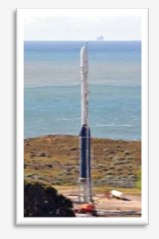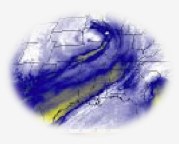 In 2008-2009, sunspots almost completely disappeared for two years. Solar activity dropped to hundred-year lows; Earth’s upper atmosphere cooled and collapsed; the sun’s magnetic field weakened, allowing cosmic rays to penetrate the Solar System in record numbers. It was a big event, and solar physicists openly wondered, where have all the sunspots gone?
In 2008-2009, sunspots almost completely disappeared for two years. Solar activity dropped to hundred-year lows; Earth’s upper atmosphere cooled and collapsed; the sun’s magnetic field weakened, allowing cosmic rays to penetrate the Solar System in record numbers. It was a big event, and solar physicists openly wondered, where have all the sunspots gone? Author: Dr. Tony Phillips
Link to the NES Virtual Campus home page.

 Youcan now change your NASA Explorer Schools Virtual Campus log-in to a differente-mail address. If you would like to update your contact information, please useyour preferred account to send an e-mail to
Youcan now change your NASA Explorer Schools Virtual Campus log-in to a differente-mail address. If you would like to update your contact information, please useyour preferred account to send an e-mail to  Glory is NASA’s newest member of a fleet of Earth-observing satellites known as the Afternoon Constellation, or “A-Train.” The satellites together offer a more cohesive and detailed picture of the Earth’s biosphere and climate. Glory will measure the affects of particles suspended in the atmosphere or aerosols. Aerosols can absorb sunlight, or they can reflect the sun’s energy back into space.
Glory is NASA’s newest member of a fleet of Earth-observing satellites known as the Afternoon Constellation, or “A-Train.” The satellites together offer a more cohesive and detailed picture of the Earth’s biosphere and climate. Glory will measure the affects of particles suspended in the atmosphere or aerosols. Aerosols can absorb sunlight, or they can reflect the sun’s energy back into space.  In this episode of NASA Now, you’ll visit NASA’s Spacecraft Propulsion Research Facility, called B-2, at NASA Plum Brook Station. You’ll meet Dr. Louis Povinelli and Brian Jones who explain why rockets are built in stages and the importance of testing a rocket before it is sent into space. B-2 is the world’s only facility capable of testing full-scale upper-stage launch vehicles and rocket engines under simulated high-altitude conditions. The engine or vehicle can be exposed for indefinite periods to low pressure, low temperatures, and dynamic solar heating. This simulates the harsh environment of space the hardware will encounter during orbital or interplanetary travel.
In this episode of NASA Now, you’ll visit NASA’s Spacecraft Propulsion Research Facility, called B-2, at NASA Plum Brook Station. You’ll meet Dr. Louis Povinelli and Brian Jones who explain why rockets are built in stages and the importance of testing a rocket before it is sent into space. B-2 is the world’s only facility capable of testing full-scale upper-stage launch vehicles and rocket engines under simulated high-altitude conditions. The engine or vehicle can be exposed for indefinite periods to low pressure, low temperatures, and dynamic solar heating. This simulates the harsh environment of space the hardware will encounter during orbital or interplanetary travel.
